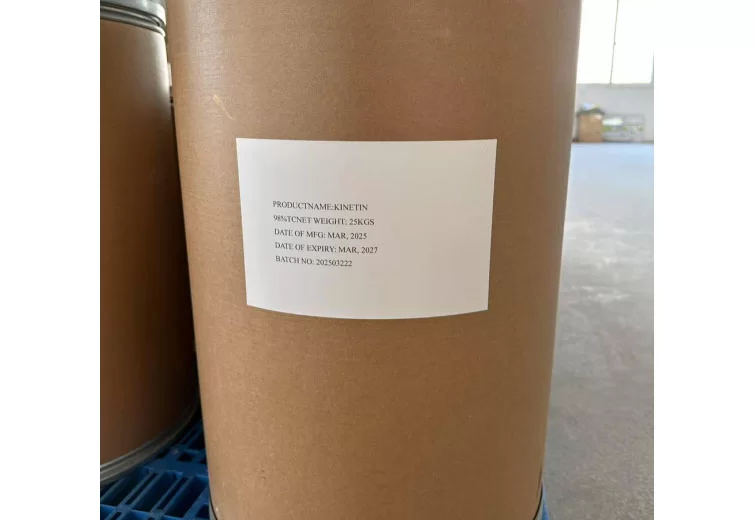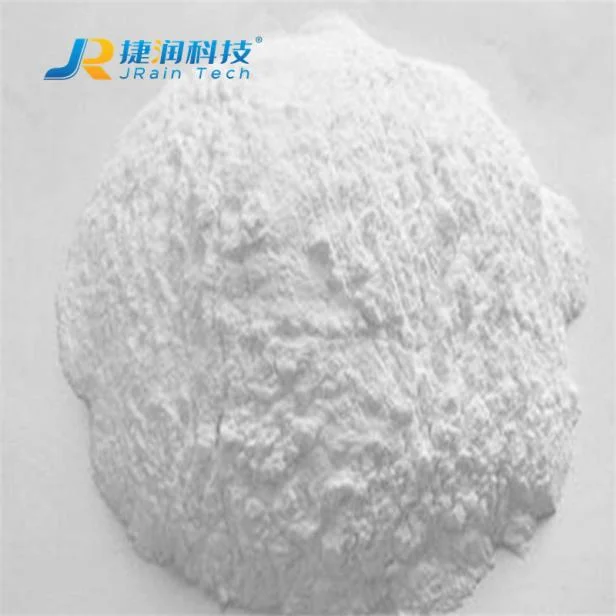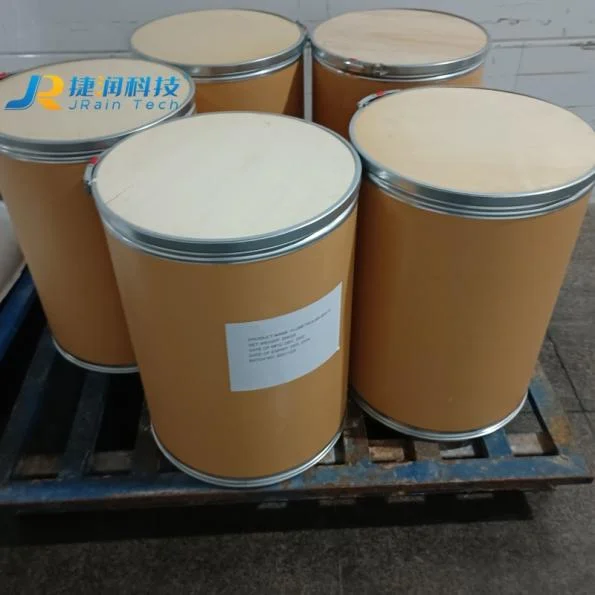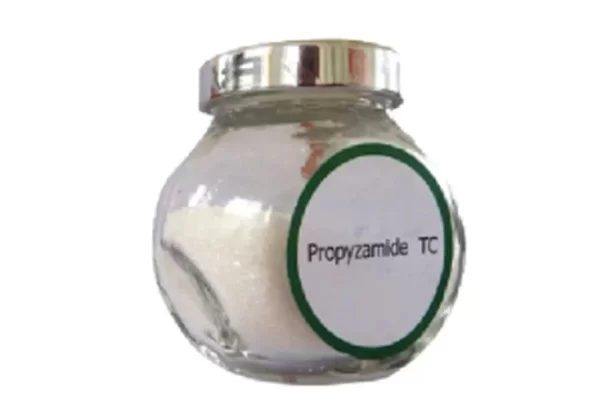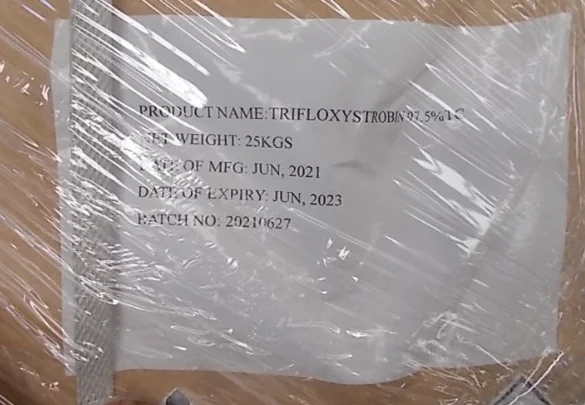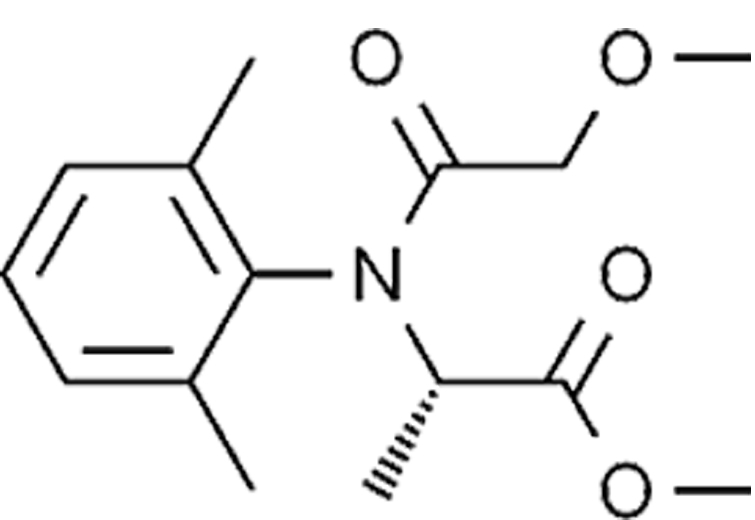
Metalaxyl 98% TC EC ,WDG WP
· Common name: Metalaxyl
· IUPAC name: methyl N-(2,6-dimethylphenyl)-N-(methoxyacetyl)-DL-alaninate
· CAS No.: 57837-19-1
· Molecular formula:C15H21NO4
· Molecular weight: 279.33
· State: Solid
· Packing: 25kg (providing additional packing as required)
· Mode of action: Systemic fungicide with protective and curative action, absorbed through the leaves, stems, and roots. Inhibits protein synthesis in fungi, by interference with the synthesis of ribosomal RNA.
· Application:To control diseases caused by air- and soil-borne Peronosporales on a wide range of temperate, subtropical and tropical crops. Foliar sprays with mixtures of metalaxyl and protectant fungicides are recommended to control air-borne diseases caused by Pseudoperonospora humuli on hops, Phytophthora infestans on potatoes and tomatoes, Peronospora tabacina on tobacco, Plasmopara viticola on vines, Bremia lactucae on lettuce, and downy mildews on various vegetables, at 200-300 g/ha.Soil applications of metalaxyl alone are used to control soil-borne pathogens causing root and lower stem rots on avocado and citrus, at 500-1500 g/ha. Seed treatments control systemic Peronosporaceae on maize, peas, sorghum and sunflowers, as well as damping-off (Pythium spp.) of various crops.
What Our Customers Say About Metalaxyl
Metalaxyl FAQs
-
80%High PurityEnsure the reliability of each product.
-
58%Fast-Acting FormulaQuickly provide visible effects
-
What are the advantages of different Metalaxyl formulations?
What are the advantages of different Metalaxyl formulations?
The TC offers formulation flexibility, EC provides easy mixing, WDG reduces dust exposure, and WP offers cost-effective application. Each formulation maintains the same active ingredient efficacy while catering to different application needs.
-
Which diseases does Metalaxyl control most effectively?
Which diseases does Metalaxyl control most effectively?
Metalaxyl specializes in Oomycete diseases including Phytophthora, Pythium, and downy mildews. Its systemic activity makes it valuable in crops like potatoes, vegetables, and tobacco facing these pathogens.
-
Can Metalaxyl be used in tank mixes with other pesticides?
Can Metalaxyl be used in tank mixes with other pesticides?
Yes, it's compatible with many commonly used pesticides when mixed properly. Always conduct a jar test before large-scale mixing and follow recommended mixing orders to maintain product stability.
-
What safety equipment is required when handling?
What safety equipment is required when handling?
Wear chemical-resistant gloves, protective eyewear, long-sleeved clothing, and shoes plus socks during mixing and application. Additional respiratory protection may be needed for certain formulations.
-
How should Metalaxyl products be stored properly?
How should Metalaxyl products be stored properly?
Store in original containers in a cool, dry place away from food and feed. Keep containers tightly sealed and protected from extreme temperatures to maintain product quality throughout its shelf life.





